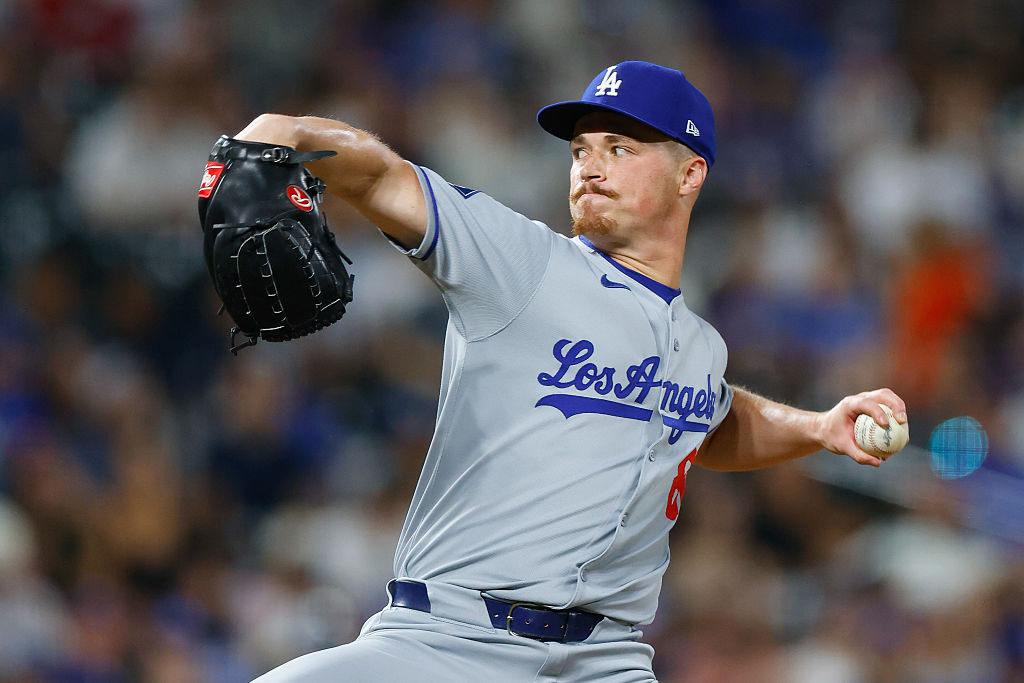For many of us these are dark days. War in Gaza and in Ukraine, climate change, the tragic Los Angeles fires, and domestic political turmoil conspired to turn the zeitgeist into a foul wind. In my medical practice, I see the challenges of disease and debility faced by so many. In such times hope takes on added importance. Fortunately for our nation and for LA in particular, baseball offers a reliable wellspring of that scarce but sacred commodity.
I like basketball and I’ll watch an occasional football game. But these other sports don’t compete with baseball when it comes to hope. It springs from the sport’s striking lack of predictability both for teams and individual players. Yes, there is an edge for big market teams like the Dodgers and Yankees with their fat payrolls. But low payroll teams with good leadership and some surprise talent can compete. As I write this, the team with the best record in major league baseball (by far) is the Milwaukee Brewers, whose payroll ranks 23rd of the 30 major league teams. Second best record? The Detroit Tigers with baseball’s 17th largest payroll.
Part of what makes baseball special is that individual performance is both unpredictable and variable. Multiply that by the 25 members of a team and you have a recipe for some big surprises. In addition, with baseball talent, the way the twig is bent doesn’t reveal too much about the future of the tree. That can be seen in professional scouts’ inability to identify future stars.
A comparison to professional basketball helps. If you review the names of the first player drafted in the NBA’s annual draft from 2000 to 2020, most of the players are stars or superstars easily recognized by most fans. If you look at the top picks in baseball for those years, there a few stars but also many unfamiliar names.
The NBA draft selection process is more reliable because the players are largely selected for raw athletic talent: Those that are fastest, quickest and the highest jumpers become the best players. In contrast, the most talented young baseball players aren’t sure bets for stardom. More ethereal tools, including intensity of desire, work ethic and mental concentration, allow less physically gifted players to compensate for deficits in athleticism and elevate themselves to stardom.
The ranks of successful NBA players who were chosen after the second round (about 60 picks) was so small that the league limited the draft to two rounds in 1989. In contrast, many major league baseball stars were drafted well below the elite territory of the first round. Dodger star shortstop Mookie Betts? Round 5, the 172nd selection in 2011. First baseman Freddie Freeman, perennial all-star and hero of last year’s World Series? Second round, 78th pick in 2007.
Dodger rookie relief pitcher Jack Dreyer offers a more dramatic example. He played baseball at the University of Iowa. In the 2021 major league baseball draft 612 players were selected in 20 rounds. Dreyer wasn’t one of them. The Dodgers signed him undrafted. After three outstanding seasons in the minor leagues, Dreyer earned a prized spot on the major league roster this spring. As a rookie, he has become a mainstay of the Dodger bullpen, pitching in over 40% of the team’s games with outstanding performance statistics. Who would have guessed? Obviously not the baseball scouts. Will Dreyer eventually join the pantheon of great Dodger relievers such as Ron Perranoski, Mike Marshall and Eric Gagne? No one knows. But he’s already helped make this Dodger season more memorable.
Though you can’t win them all in this most unpredictable of sports, almost anyone might eventually win.
Legendary Connie Mack, who managed in the major leagues for 53 years, once said, “Baseball is like life, you can’t win them all.” Simple and true, like a fastball over the heart of the plate. Though you can’t win them all in this most unpredictable of sports, almost anyone might eventually win. And if anyone can win in this ultra-competitive sport maybe we can also overcome the seemingly insurmountable challenges of life in these dark times.
So pull up a chair and tune in. It’s almost October, baseball’s high drama month. Jack Dreyer will soon be taking the mound. Don’t worry, global warming will still be there when it’s over.
Dr. Daniel Stone is Regional Medical Director of Cedars-Sinai Valley Network and a practicing internist and geriatrician with Cedars Sinai Medical Group. The views expressed in this column do not necessarily reflect those of Cedars-Sinai.




